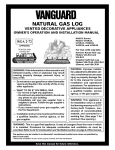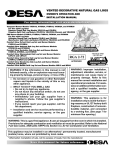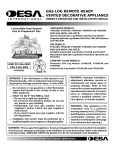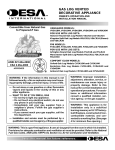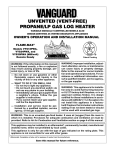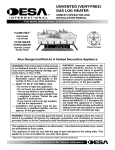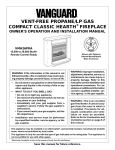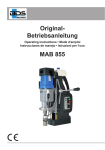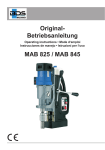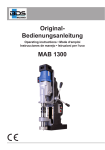Download Desa VVSR18 User's Manual
Transcript
® NATURAL GAS LOG VENTED DECORATIVE APPLIANCES OWNER’S OPERATION AND INSTALLATION MANUAL Burner Models VVSR18, VVSR24, VVDR18, VVDR24, and VVDR30 RGA 2-72 APPROVED For Use with Log Sets TESTED AND LISTED BY Hanover Round Oak Log Models VSLR18 and VSLR24 Kingston Split Oak Log Models VDLCR18, VDLCR24 (Shown), and VDLCR30 WARNING: If the information in this manual is not followed exactly, a fire or explosion may result causing property damage, personal injury, or loss of life. — Do not store or use gasoline or other flammable vapors and liquids in the vicinity of this or any other appliance. — WHAT TO DO IF YOU SMELL GAS • Do not try to light any appliance. • Do not touch any electrical switch; do not use any phone in your building. • Immediately call your gas supplier from a neighbor’s phone. Follow the gas supplier’s instructions. • If you cannot reach your gas supplier, call the fire department. — Installation and service must be performed by a qualified installer, service agency, or the gas supplier. WARNING: Improper installation, adjustment, alteration, service, or maintenance can cause injury or property damage. Refer to this manual for correct installation and operational procedures. For assistance or additional information consult a qualified installer, service agency, or the gas supplier. WARNING: This appliance is for installation only in a solidfuel burning masonry or UL127 factory-built fireplace, constructed of noncombustible material, and connected to a working flue. (See page 7 for minimum flue opening.) WARNING: This is a gas-fired appliance. It uses air (oxygen) from the room in which it is installed. Provisions for adequate combustion and ventilation air must be provided. Refer to Air for Combustion and Ventilation section on page 4 of this manual. This appliance may be installed in an aftermarket* manufactured (mobile) home, where not prohibited by state or local codes. * Aftermarket: Completion of sale, not for purpose of resale, from the manufacturer Save this manual for future reference. ® VENTED NATURAL GAS LOGS SAFETY INFORMATION WARNING ICON G 001 WARNINGS 1. 2. WARNING: Keep flue open when operating unit. IMPORTANT: Read this Owner’s Manual carefully and completely before trying to assemble, operate, or service this log set. Improper use of this log set can cause serious injury or death from burns, fire, explosion, electrical shock, and carbon monoxide poisoning. 3. DANGER: Carbon monoxide poisoning may lead to death! Carbon Monoxide Poisoning: Early signs of carbon monoxide poisoning resemble the flu, with headaches, dizziness, or nausea. If you have these signs, the log set may not be working properly. Get fresh air at once! Have log set serviced. Some people are more affected by carbon monoxide than others. These include pregnant women, people with heart or lung disease or anemia, those under the influence of alcohol, and those at high altitudes. Natural Gas: Natural gas is odorless. An odor-making agent is added to the gas. The odor helps you detect a gas leak. However, the odor added to the gas can fade. Gas may be present even though no odor exists. Make certain you read and understand all Warnings. Keep this manual for reference. It is your guide to safe and proper operation of this log set. WARNING: Any change to this log set or its controls can be dangerous. 4. 5. 6. 7. 8. This appliance, as supplied, is only for use with the type of gas indicated on the rating plate. This appliance is convertible for use with propane/LP, using the GA9000 or GA9100 pilot kit. If you smell gas • shut off gas supply • do not try to light any appliance • do not touch any electrical switch; do not use any phone in your building • immediately call your gas supplier from a neighbor’s phone. Follow the gas supplier’s instructions • if you cannot reach your gas supplier, call the fire department Never install the log set • in a recreational vehicle • where curtains, furniture, clothing, or other flammable objects are less than 42 inches from the front, top, or sides of the log set • in high traffic areas • in windy or drafty areas Before installing in a solid fuel burning fireplace, the chimney flue and firebox must be cleaned of soot, creosote, ashes and loose paint by a qualified chimney cleaner. Creosote will ignite if highly heated. Inspect chimney flue for damage. You must operate this log set with a fireplace screen in place. Make sure fireplace screen is closed before running log set. This log set is designed to be smokeless. If logs ever appear to smoke, turn off appliance and call a qualified service person. Note: During initial operation, slight smoking could occur due to log curing and the burning of manufacturing residues. You may wish to add more ventilation by opening a window. To reduce the creation of soot, follow the instructions in Cleaning and Maintenance, page 20. Do not allow fans to blow directly into the fireplace. Avoid any drafts that alter burner flame patterns. Ceiling fans can create drafts that alter burner flame patterns. Altered burner patterns can increase sooting. 2 9. 10. 11. 12. 13. 14. 15. 16. 17. Do not use a blower insert, heat exchanger insert or other accessory not approved for use with this log set. This log set needs fresh, outside air ventilation to run properly. See Air for Combustion and Ventilation, pages 4 through 6. Do not run log set • where flammable liquids or vapors are used or stored • under dusty conditions Do not burn solid fuel in the fireplace after installing the log set. Do not use this log set to cook food or burn paper or other objects. Log set becomes very hot when in use. Keep children and adults away from hot surface to avoid burns or clothing ignition. Log set will remain hot for a time after shutdown. Allow surface to cool before touching. Carefully supervise young children when they are in the room with log set. Do not use appliance if any part has been exposed to or under water. Immediately call a qualified service technician to inspect the room appliance and to replace any part of the control system (if using GA9000 or GA9100) and any gas control which has been under water. To help prevent breakage, new logs must be broken-in (see Curing Logs page 12). Turn log set off and let cool before servicing, installing, or repairing. Only a qualified service person should install, service, or repair log set. 901265 OWNER’S MANUAL PRODUCT IDENTIFICATION OPTIONAL PRODUCT FEATURES ON/OFF SAFETY VALVE/ PILOT KIT AND PROPANE/LP CONVERSION Grate Steps Grate An optional valve/safety pilot kit with a piezo ignitor is available for this appliance. This system requires no matches, batteries, or other sources to light. You must use this optional system for LP conversion. See Accessories, page 20. REMOTE CONTROL READY (MILLIVOLT) SAFETY VALVE/ PILOT KIT Burner Pan Burner Clamp Burner Inlet Fitting Burner Manifold Figure 1 - Product Identification (VVDR24 Shown) Hearth Kit Model ______________________________________ Serial Number ________________________________________ Log Set Model ________________________________________ LOCAL CODES UNPACKING Install and use log set with care. Follow all local codes. In the absence of local codes, use the latest edition of The National Fuel Gas Code ANS Z223.1, also known as NFPA 54*. CAUTION: Do not remove the metal data plates from the burner pan. The data plates contain important product information. *Available from: American National Standards Institute, Inc. 1430 Broadway New York, NY 10018 National Fire Protection Association, Inc. Batterymarch Park Quincy, MA 02269 901265 1. 2. 3. Remove logs, hearth kit, pan materials, and hardware from carton. Remove all protective packaging applied to logs and base for shipment. Check all items for any shipping damage. If damaged, promptly inform dealer where you bought the product. 3 An optional millivolt valve/safety pilot kit with a piezo ignitor is available for this appliance. This system requires no matches, batteries, or other sources to light. This system may be connected to a wall switch or hand-held wireless remote control. See Accessories, page 20. REMOTE CONTROL ACCESSORIES There is an optional hand-held ON/OFF remote control that can be purchased separately for this log set. You must use the millivolt valve/safety pilot kit to use remote accessories with this appliance. See Accessories, page 20. A wall switch is also available for this appliance. You must use the millivolt valve/ safety pilot kit to use the wall switch with this appliance. See Accessories, page 20. ® VENTED NATURAL GAS LOGS AIR FOR COMBUSTION AND VENTILATION WARNING: This appliance shall not be installed in a confined space or unusually tight construction unless provisions are provided for adequate combustion and ventilation air. Read the following instructions to insure proper fresh air for this and other fuel-burning appliances in your home. Today’s homes are built more energy efficient than ever. New materials, increased insulation, and new construction methods help reduce heat loss in homes. Home owners weather strip and caulk around windows and doors to keep the cold air out and the warm air in. During heating months, home owners want their homes as airtight as possible. While it is good to make your home energy efficient, your home needs to breathe. Fresh air must enter your home. All fuel-burning appliances need fresh air for proper combustion and ventilation. Exhaust fans, fireplaces, clothes dryers, and fuel burning appliances draw air from the house to operate. You must provide adequate fresh air for these appliances. This will insure proper venting of vented fuelburning appliances. PROVIDING ADEQUATE VENTILATION The following are excerpts from National Fuel Gas Code. NFPA 54/ANS Z223.1, Section 5.3, Air for Combustion and Ventilation. All spaces in homes fall into one of the three following ventilation classifications: 1. Unusually Tight Construction 2. Unconfined Space 3. Confined Space The information on pages 4 through 6 will help you classify your space and provide adequate ventilation. Unusually Tight Construction The air that leaks around doors and windows may provide enough fresh air for combustion and ventilation. However, in buildings of unusually tight construction, you must provide additional fresh air. Unusually tight construction is defined as construction where: a. walls and ceilings exposed to the outside atmosphere have a continuous water vapor retarder with a rating of one perm (6x10-11 kg per pa-sec-m2) or less with openings gasketed or sealed and b. weather stripping has been added on openable windows and doors and c. caulking or sealants are applied to areas such as joints around window and door frames, between sole plates and floors, between wall-ceiling joints, between wall panels, at penetrations for plumbing, electrical, and gas lines, and at other openings. Confined and Unconfined Space The National Fuel Gas Code (ANS Z223.1, 1992 Section 5.3) defines a confined space as a space whose volume is less than 50 cubic feet per 1,000 Btu per hour (4.8 m3 per kw) of the aggregate input rating of all appliances installed in that space and an unconfined space as a space whose volume is not less than 50 cubic feet per 1,000 Btu per hour (4.8 m3 per kw) of the aggregate input rating of all appliances installed in that space. Rooms communicating directly with the space in which the appliances are installed*, through openings not furnished with doors, are considered a part of the unconfined space. This log set shall not be installed in a confined space or unusually tight construction unless provisions are provided for adequate combustion and ventilation air. * Adjoining rooms are communicating only if there are doorless passageways or ventilation grills between them. If your home meets all of the three criteria above, you must provide additional fresh air. See Ventilation Air From Outdoors, page 6. If your home does not meet all of the three criteria above, proceed to Determining Fresh-Air Flow For Appliance Location, page 5. 4 901265 OWNER’S MANUAL AIR FOR COMBUSTION AND VENTILATION Continued DETERMINING FRESH-AIR FLOW FOR APPLIANCE LOCATION Determining if You Have a Confined or Unconfined Space Use this work sheet to determine if you have a confined or unconfined space. Space: Includes the room in which you will install appliance plus any adjoining rooms with doorless passageways or ventilation grills between the rooms. 1. Determine the volume of the space (length x width x height). Length x Width x Height = _________________ cu. ft. (volume of space) Example: Space size 20 ft. (length) x 16 ft. (width) x 8 ft. (ceiling height) = 2560 cu. ft. (volume of space) If additional ventilation to adjoining room is supplied with grills or openings, add the volume of these rooms to the total volume of the space. 2. Divide the space volume by 50 cubic feet to determine the maximum Btu/Hr the space can support. _____________ (volume of space) ÷ 50 cu. ft. = (maximum Btu/Hr the space can support) Example: 2560 cu. ft. (volume of space) ÷ 50 cu. ft. = 51.2 or 51,200 (maximum Btu/Hr the space can support) 3. Add the Btu/Hr of all fuel burning appliances in the space. Gas fireplace logs _____________ Btu/Hr Example: Gas water heater* _____________ Btu/Hr Gas water heater 40,000 Btu/Hr Gas furnace _____________ Btu/Hr Gas fireplace logs + 55,000 Btu/Hr Vented gas heater _____________ Btu/Hr Total = 95,000 Btu/Hr Vent-free heater _____________ Btu/Hr Other gas appliances* + _____________ Btu/Hr Total = _____________ Btu/Hr * Do not include direct-vent gas appliances. Direct-vent draws combustion air from the outdoors and vents to the outdoors. 4. Compare the maximum Btu/Hr the space can support with the actual amount of Btu/Hr used. _____________ Btu/Hr (maximum the space can support) _____________ Btu/Hr (actual amount of Btu/Hr used) Example: 51,200 Btu/Hr (maximum the space can support) 95,000 Btu/Hr (actual amount of Btu/Hr used) The space in the above example is a confined space because the actual Btu/Hr used is more than the maximum Btu/Hr the space can support. You must provide additional fresh air. Your options are as follows: A. Rework worksheet, adding the space of an adjoining room. If the extra space provides an unconfined space, remove door to adjoining room or add ventilation grills between rooms. See Ventilation Air From Inside Building, page 6. B. Vent room directly to the outdoors. See Ventilation Air From Outdoors, page 6. C. Install a lower Btu/Hr heater, if lower Btu/Hr size makes room unconfined. If the actual Btu/Hr used is less than the maximum Btu/Hr the space can support, the space is an unconfined space. You will need no additional fresh air ventilation. WARNING: If the area in which the appliance may be operated is smaller than that defined as an unconfined space or if the building is of unusually tight construction, provide adequate combustion and ventilation air by one of the methods described in the National Fuel Gas Code, ANS Z223.1, 1992, Section 5.3 or applicable local codes. Continued 901265 5 ® VENTED NATURAL GAS LOGS AIR FOR COMBUSTION AND VENTILATION Continued VENTILATION AIR Ventilation Air From Inside Building This fresh air would come from an adjoining unconfined space. When ventilating to an adjoining unconfined space, you must provide two permanent openings: one within 12" of the ceiling and one within 12" of the floor on the wall connecting the two spaces (see options 1 and 2, Figure 2). You can also remove door into adjoining room (see option 3, Figure 2). Follow the National Fuel Gas Code NFPA 54/ANS Z223.1, Section 5.3, Air for Combustion and Ventilation for required size of ventilation grills or ducts. WARNING: Rework worksheet, adding the space of the adjoining unconfined space. The combined spaces must have enough fresh air to supply all appliances in both spaces. Ventilation Air From Outdoors Provide extra fresh air by using ventilation grills or ducts. You must provide two permanent openings: one within 12" of the ceiling and one within 12" of the floor. Connect these items directly to the outdoors or spaces open to the outdoors. These spaces include attics and crawl spaces. Follow the National Fuel Gas Code NFPA 54/ANS Z223.1, Section 5.3, Air for Combustion and Ventilation for required size of ventilation grills or ducts. IMPORTANT: Do not provide openings for inlet or outlet air into attic if attic has a thermostat-controlled power vent. Heated air entering the attic will activate the power vent. 12" Ventilation Grills Into Adjoining Room, Option 1 Ventilation Grills Into Adjoining Room, Option 2 Or Remove Door into Adjoining Room, Option 3 12" Figure 2 - Ventilation Air from Inside Building Outlet Air Ventilated Attic Outlet Air To Attic To Crawl Space Inlet Air Inlet Air Ventilated Crawl Space Figure 3 - Ventilation Air from Outdoors 6 901265 OWNER’S MANUAL INSTALLATION CAUTION: Do not remove the metal data plates attached to the burner pan. The data plates contain important warranty information. WARNING: Before installing in a solid fuel burning fireplace, the chimney flue and firebox must be cleaned of soot, creosote, ashes and loose paint by a qualified chimney cleaner. Creosote will ignite if highly heated. A dirty chimney flue may create and distribute soot within the house. Inspect chimney flue for damage. NOTICE: Installation, service, and repair of this appliance must be performed by a qualified installer, service agency, company or gas supplier experienced with this type of gas appliance. Only factory authorized components listed in these instructions may be used in accordance with the manufacturer’s instructions and all codes and requirements of the authority having jurisdiction. Any modifications to this kit, or use of unauthorized components or accessory items will void the manufacturer’s warranty, and may result in a hazardous condition. FLUE OPENING SPECIFICATIONS Btu Input Natural Gas Btu Input Propane Gas Minimum Vent Opening 18" Single Burner 50,000 40,000 8" dia. VVSR24 24" Single Burner 60,000 50,000 8" dia. VVDR18 18" Dual Burner 55,000 45,000 8" dia. VVDR24 24" Dual Burner 65,000 55,000 8" dia. VVDR30 30" Dual Burner 70,000 60,000 8" dia. MODEL DESCRIPTION VVSR18 MINIMUM FIREBOX SIZES LOG FRONT BACK SIZE WIDTH* WIDTH** 18" 28" 16" 3 24" 29 /4" 17" 30" 36" 27" DEPTH HEIGHT 14" 18" 1 15 /2" 18" 18" 18" *Add 6" if safety valve/pilot is used **At depth indicated FUEL INLET PRESSURE SPECIFICATIONS (W.C.) Min. Max. NG 5.5" 10.5" LP 11" 13" BURNER ORIFICE LOG NATURAL PROPANE/LP SIZE IN. NUM. IN. NUM. 18" .120 31 .073 49 24" .129 30 .086 44 30" .1405 28 .089 43 Figure 4 - Technical Information Charts CHECK GAS TYPE Use only natural gas. If your gas supply is not natural gas, you must install ON/OFF Safety Valve/Pilot Kit (see Accessories, page 20). Call dealer where you bought log set. If the fireplace does not have a gas supply shut-off valve, one must be installed. Note: This vented appliance must be installed only in a solid-fuel burning fireplace with a working flue and constructed of noncombustible material. VENTING SPECIFICATIONS FOR INSTALLATION The fireplace chimney flue and vent must be drafting properly. To check the vent for proper drafting: Light a tightly rolled newspaper on one end and place it at the inside front edge of the fireplace. Observe the smoke and be sure the vent is properly drawing it up the chimney. If the smoke spills out into the room, extinguish the flame and remove any obstruction until proper venting is achieved. The chimney flue must remain open a minimum of 3" at all times during the operation of this log set. The charts in Figure 4 indicate technical information regarding the installation of your gas log set. Please make sure that all of the specifications shown are applicable before installation is attempted. The fireplace must include a working flue and venting system with the minimum openings shown in the Figure 4. Continued 901265 7 ® VENTED NATURAL GAS LOGS INSTALLATION Continued INSTALLING DAMPER CLAMP Secure the damper stop clamp provided to the leading edge of the damper as shown in Figure 5. If for any reason this clamp doesn't work on your fireplace, another suitable clamp or permanent stop must be installed, or the damper blade must be cut or removed. Damper Clamp Damper Damper Masonry Fireplace Manufactured Fireplace CAUTION: Use only new, black iron or steel pipe. Internally-tinned copper tubing may be used in certain areas. Check your local codes. Use pipe of 1/2" diameter or greater to allow proper gas volume to log set. If pipe is too small, undue loss of pressure will occur. Apply pipe joint sealant lightly to male threads. This will prevent excess sealant from going into pipe. Excess sealant in pipe could result in a clogged burner injector. CAUTION: Use pipe joint sealant that is resistant to liquid petroleum (LP) gas. Figure 5 - Attaching Damper Clamp CONNECTING TO GAS SUPPLY Approved Flexible Gas Hose (if allowed by local codes) Damper WARNING: A qualified service person must connect log set to gas supply. Follow all local codes. Installation Items Needed Before installing log set, make sure you have the items listed below. • piping (check local codes) • sealant (resistant to Propane/LP gas) • manual shutoff valve • test gauge connection • adjustable (crescent) wrench or pliers • sediment trap • tee joint • pipe wrench WARNING: Test all gas piping and connections for leaks after installing or servicing. Correct all leaks at once. WARNING: Never use an open flame to check for a leak. Apply a mixture of liquid soap and water to all joints. Bubbles forming show a leak. Correct all leaks at once. Installation must include a manual shutoff valve, union, and plugged 1/8" NPT tap. Locate NPT tap within reach for test gauge hook up. NPT tap must be upstream from log set (see Figure 6). Install sediment trap in supply line as shown in Figure 6. Locate sediment trap where it is within reach for cleaning. Locate sediment trap where trapped matter is not likely to freeze. A sediment trap traps moisture and contaminants. This keeps them from going into log set controls. If sediment trap is not installed or is installed wrong, log set may not run properly. Damper Clamp CHECKING GAS CONNECTIONS Pressure Testing Gas Supply Piping System Test Pressures In Excess Of 1/2 PSIG 1. Disconnect log set and its individual manual shutoff valve from gas supply piping system. 2. Cap off open end of gas pipe where manual shutoff valve was connected. 3. Pressurize supply piping system by either using compressed air or opening main gas valve located on or near gas meter. 4. Check all joints of gas supply piping system. Apply mixture of liquid soap and water to gas joints. Bubbles forming show a leak. 5. Correct all leaks at once. 6. Reconnect log set and manual shutoff valve to gas supply. Check reconnected fittings for leaks. A.G.A. Design-Certified Manual Shutoff Valve With 1/8" NPT Tap* 3" Minimum Cap Figure 9 - Gas Connection From Gas Meter (5" W.C.** to 10.5" W.C. Pressure) Pipe Nipple Tee Joint Sediment Trap * Purchase the optional A.G.A. design-certified manual shutoff valve from your dealer. See Accessories, page 20. ** Minimum inlet pressure for purpose of input adjustment. 8 901265 OWNER’S MANUAL INSTALLATION Continued 3. 4. Test Pressures Equal To or Less Than 1/2 PSIG 1. Close manual shutoff valve (see Figure 7). 2. Pressurize supply piping system by either using compressed air or opening main gas valve located on or near gas meter. 3. Check all joints from gas meter to manual shutoff valve (see Figure 7). Apply mixture of liquid soap and water to gas joints. Bubbles forming show a leak. 4. Correct all leaks at once. Manual Shutoff Valve 5. 6. 7. Gas Meter Unscrew burner inlet fitting from burner manifold (see Figure 9). Place burner manifold in pan with threaded opening facing open knockout plug. Using thread sealant (resistant to the action of propane/LP gas) on larger end of fitting, screw the burner inlet fitting through hole and into burner manifold. Tighten using a wrench. If using propane/LP gas, see Propane/LP Gas Conversion, page 10. Using burner clamp, screw, and nut provided, assemble clamp to pan (“U” style burners only). This will hold the burner manifold in place. If using optional GA9000 kit, go to Optional GA9000 On/Off Safety Valve/Pilot Kit section for installation instructions. If using optional GA9100 kit, follow instructions included with kit for installation and operation. Nut Burner Manifold Figure 7 - Checking Gas Joints Burner Pan Assembly (Facing Front of Fireplace) Figure 10 - Connecting Gas to Appliance OPTIONAL GA9000 ON/OFF SAFETY VALVE/PILOT KIT ASSEMBLY For additional convenience and safety, or for propane/LP conversion, an optional ON/ OFF safety valve/pilot kit is available. See Accessories, page 20. Natural Gas Installation 1. Knock-Out Plugs Burner Pan Screw Burner Inlet Fitting Figure 9 - Installing Burner Installation and Gas Connection 1. 2. 3. Burner Pan Assembly (Facing Front of Fireplace) Adapter Fitting WARNING: You must use a ON/OFF safety valve/pilot kit for propane/LP conversion. Kit Assembly Note: The following instructions apply to both standard single bar burners, as well as dual flame “U” style burners. Be sure all pipe threaded connections are tight, and have thread compound to prevent leaks. 1. Determine which side the gas line will be coming into the fireplace. 2. Using a hammer and screw driver, remove knockout plug from the side of the pan that corresponds to the gas line (see Figure 8). Install the gas connector tube to the gas supply fitting. Carefully shape tube to attach to adapter fitting. Be careful not to cause kinks in tube. Gas Connector Tube Burner Clamp HEARTH KIT ASSEMBLY AND INSTALLATION Place the burner pan assembly in the center of the fireplace floor. Make sure the front of pan faces forward. Thread the gas supply fitting to the fireplace gas supply pipe. Use thread sealant. Install adapter fitting onto the burner inlet fitting using thread sealant on male threads of burner inlet fitting (see Figure 10). Adjust to most convenient position. Thread the gas control valve onto the burner inlet fitting (see Figure 11). Use thread sealant on the male threads of the burner inlet fitting. Hold the burner inlet fitting with a wrench to prevent overtightening the connection to the burner. Make sure the control rod is facing the front (see Figure 11). Gas Control Valve Burner Pan Assembly Burner Inlet Fitting Control Rod Figure 11 - Installing Gas Control Valve Figure 8 - Knock-Out Plug Locations 901265 4. Continued 9 ® VENTED NATURAL GAS LOGS Gas Connector Tube INSTALLATION Continued 2. Attach the pilot gas line to the pilot outlet of the gas control valve and tighten. Connect the thermocouple to the rear of the gas control valve. See Figure 12. Do not overtighten. If using propane/LP gas, see Changing Pilot Orifice, page 11. 3. Install the inlet fitting into the inlet opening of the gas control valve (see Figure 13). Use thread sealant on the male pipe threads. 4. Place the burner pan assembly in the center of the fireplace floor. Make sure the front of pan faces forward. 5. Thread the gas supply fitting to the fireplace gas supply pipe. Adjust to most convenient position. 6. Install the gas connector tube to the gas supply fitting. Carefully shape tube to attach to adapter fitting. Be careful not to cause kinks in tube. 7. Test for leaks following instructions under Testing Burner for Leaks, page 11. 8. Retighten and adjust the location of the gas control as necessary. The gas control should be level, with the control rod to the front. 9. Install cover to burner pan using screws provided. 10. Install thermocouple, pilot, and ignitor onto valve cover as shown in Figure 14. Use the provided screws. 11. Push the control rod extension onto the “D” shaped control rod through the center hole in the cover. 12. Install the position decal and control knob making sure to align the marks with the correct stop positions of the gas control. Pilot position will allow the knob to push in about 1/2". Align the decals in the pilot position. Thermocouple and Line Pilot and Line Gas Control Valve Gas Control Valve Inlet Opening Gas Inlet Fitting Figure 13 - Installing Inlet Fitting and Gas Connector Tube Thermocouple Screw Pilot Ignitor 2. Be sure to use the correct orifice for your appliance. The hardware kit included with this appliance contains two orifices with a cone-like shape. If you have an 18" set, the orifice for the burner inlet fitting is red; for a 30" set, it is black. If you have a 24" log set, the orifice is already installed inside the fitting. 3. For an 18" or 30" set, use a 10mm socket or nut driver to remove the orifice from the propane/LP burner inlet fitting. Choose the correct orifice for your log set size and install in place of the orifice you just removed. 4. Using thread sealant (resistant to the action of propane/LP gas) on larger end of fitting, screw the burner inlet fitting through hole and into burner manifold. Tighten using a wrench. 5 . Follow steps 1 through 12 under Natural Gas Installation, pages 9 and 10. Injector for Natural Gas NATURAL GAS FITTING Valve Cover Control Knob Piezo Ignitor Control Rod Extension Injector for Propane/LP Gas PROPANE/ LP GAS FITTING Figure 15 - Burner Inlet Fittings with Injectors Burner Inlet Fitting for Natural Gas Figure 14 - Installing Cover, Control Knob, and Piezo Ignitor Propane/LP Gas Conversion To convert to propane/LP gas, the burner inlet fitting and pilot orifice must be replaced. The propane/LP burner inlet fitting is supplied with the orifice installed for a 24" log set. If you have an 18" or 30" set, you must change this orifice also. See Figure 1, page 3 for product identification. Figure 16 - Remove Burner Inlet Fitting Burner Inlet Fitting 1. Remove the burner inlet fitting from the burner pan assembly. DO NOT remove the orifice from this fitting. The propane/LP burner inlet fitting is included in the hardware kit (see Figure 15). Figure 12 - Gas Control Valve with Thermocouple and Pilot 10 901265 OWNER’S MANUAL INSTALLATION 4. Continued Changing Pilot Orifice The pilot is provided with a natural gas orifice installed. For propane/LP gas you must remove it and replace it with an propane/LP orifice. The hardware kit contains an propane/LP orifice with a red stripe for converting the pilot. 1. Gently loosen and remove the pilot line connection from the bracket (see Figure 17). 2. Replace the injector (see Figure 17) with the propane/LP pilot injector with the red stripe. 3. Replace and tighten the pilot line to the bracket. 4. Continue with step 3 under Natural Gas Installation, pages 9 and 10. 5. 1. 2. TESTING BURNER FOR LEAKS 3. 1. 4. Generously apply soapy solution to all connections. WARNING: Never check for gas leaks with open flame. 2. 3. Light the burner with the shutoff valve no more than half open and holding a match slightly in front of the pan (see Lighting Instructions, page 12). Inspect all connections for bubbles, raw gas odor, or flame from any area other than the burner (leaks). If leaks are detected, shut off the gas valve immediately. Tighten, or reassemble the loose connection(s) using pipe joint compound until burner system is leak free. 901265 Place the smaller top logs onto the bottom logs (see Figure 20). Leave as much open space between logs as possible to minimize flame impingement and sooting. Note: Logs may chip if they are handled roughly or if hit together while being placed. Open the bag of ash bed material (vermiculite) and spread it evenly across the burner pan to the top. You may overflow the front and sides of the pan to cover the entire pan and connecting hardware. Do not cover GA9000 or GA9100 valve. Open the glowing embers and evenly cover the ash bed material (vermiculite) in the burner pan. Kingston Split Oak Logs INSTALLING THE GRATE AND LOGS 1. Figure 17 - Installing Propane/LP Pilot Orifice 5. ADDING PAN MATERIAL 2. Pilot Injector When the burner is tested and leak free, observe the individual tongues of flame on the burner. Note: The burner design includes more ports on the outside of the bar. Make sure that all ports are clear and producing flame evenly across the burner. If any ports appear blocked, clear them by removing the burner manifold and reaming the ports with a modified paper clip or other suitable tool. When finished testing, turn the gas shutoff valve OFF to extinguish all flames. Place the grate over the burner pan where the two outer horizontal supports on the grate fit into the two pan positioning notches in the rear vertical edge of the pan. Slide the two rear log grate steps over the two outer horizontal supports on the grate as shown in Figure 18. Place the back log on the grate onto the grate steps (see Figure 19). Place the front log(s) on the grate and slide forward against the front bars on the grate (see Figure 19). Hanover Round Oak Logs Figure 19 - Installing Front and Back Logs (Number and style of your logs may vary) Grate Steps Grate Figure 18 - Installing Grate (Pan Material Not Shown) 11 Figure 20 - Placement of Top Logs (Kingston Split Oak Logs Shown) ® VENTED NATURAL GAS LOGS OPERATING APPLIANCE BEFORE LIGHTING smell all around the appliance area for gas. Be sure to smell next to the floor because some gas is heavier than air and will settle on the floor. WHAT TO DO IF YOU SMELL GAS • Do not try to light any appliance. • Do not touch any electric switch; do not use any phone in your building. • Immediately call your gas supplier from a neighbor’s phone. Follow the gas supplier’s instructions. • If you cannot reach your gas supplier, call the fire department. LIGHTING INSTRUCTIONS 1. 1. Turn gas shutoff valve clockwise to the OFF position. CURING LOGS During the 2-3 hour appliance break-in period, you may detect an odor from the appliance as the various paints and compounds used in the manufacturing of this log set cure. This is a normal and temporary situation that is not cause for alarm. However, you may want to provide extra ventilation to the room during this time. To ensure proper curing of the logs: • Ignite a 2" flame and maintain it for 1 hour. • Burn the logs in consecutive 1 hour periods raising the flame an additional 2" to full flame height for a total of three hours. OPERATING INSTRUCTIONS FOR GA9000 Note: Operation instructions for GA9100 Remote Ready Valve/Pilot Kit will be included with the kit. 1. STOP! Read the safety information, column one this page. 2. Make sure manual shutoff valve is fully open. 3. Press in and turn control knob clockto the OFF position. wise 4. Wait five (5) minutes to clear out any gas. Then smell for gas around log set and near floor. If you smell gas, STOP! See Safety information, page 2 and Air For Combustion And Ventilation, pages 4 through 6. If you don’t smell gas, go to the next step. 6. 7. 8. Control Knob Pilot Ignitor ON OFF FROM "PILOT" POSITION SLIGHT PUSH TO TURN OFF PULL PUSH On Off OFF 5. Shutting Off Appliance ON 4. Adjust the flame ON/OFF by turning the gas shutoff valve counterto open or clockclockwise wise to close, as necessary. FROM "PILOT" POSITION SLIGHT PUSH TO TURN OFF PULL PUSH 2. 3. STOP! Read the safety information, above. Turn the gas shutoff valve to OFF. Wait five (5) minutes to clear out any gas. If you then smell gas STOP! Follow the safety information above. If you don't smell gas, go on to the next step. Light a match and lay it on top of the pan material about 2" from the end of the supply side of the pan Slowly turn the gas shutoff valve ON until the burner ignites. If the burner doesn’t ignite within 10 seconds with the match burning, turn the shutoff valve OFF and repeat steps 1 through 4 again. 1. OFF WARNING: If you do not follow these instructions exactly, a fire or explosion may result causing property damage, personal injury or loss of life. Flame Adjustment Turn control knob counterclockwise to the PILOT position and press in. Keep control knob pressed in for five (5) seconds. Note: You may be running this log set for the first time after hooking up to gas supply. If so, the control knob may need to be pressed in for 30 seconds. This will allow air to bleed from the gas system. • If control knob does not pop up when released, contact a qualified service person or gas supplier for repairs. With control knob pressed in, push down and release ignitor button. This will light pilot. The pilot is attached to the rear of the front burner. If needed, keep pressing ignitor button until pilot lights. Note: If pilot does not stay lit, contact a qualified service person or gas supplier for repairs. Until repairs are made, light pilot with match. Keep control knob pressed in for 30 seconds after lighting pilot. After 30 seconds, release control knob. Note: If pilot goes out, repeat steps 3 through 7. Turn control knob counterclockwise to the ON position. Burner should light. If burner does not light, call a qualified service person. FROM "PILOT" POSITION SLIGHT PUSH TO TURN OFF PULL PUSH WARNING: Keep flue open when operating unit. 5. ON FOR YOUR SAFETY READ BEFORE LIGHTING GAS SHUTOFF VALVE OPERATION Figure 21 - Ignitor and Control Knob Pilot Thermocouple Figure 22 - Thermocouple and Pilot 12 901265 OWNER’S MANUAL OPERATING APPLIANCE Continued TO TURN OFF GAS TO APPLIANCE Shutting Off Appliance 1. 2. Turn control knob clockwise to the PILOT position. Press in and turn control clockwise to the OFF position. Shutting Off Burner Only (pilot stays lit) Turn control knob clockwise the PILOT position. to TROUBLESHOOTING Note: For additional help, visit DESA International’s Technical Service web site at www.desatech.com. WARNING: Turn off log set and let cool before servicing. Only a qualified service person should service and repair log set. Note: All troubleshooting items are listed in order of operation. OBSERVED PROBLEM POSSIBLE CAUSE REMEDY Log set is smoking/sooting excessively (Note: It is natural and unavoidable for vented gas log sets to produce moderate levels of carbon (soot) where flames contact the logs. This is especially true with propane/LP gas.) 1. Poor fuel quality 5. Excessive gas supply/pressure 1. Contact local natural or propane/LP gas company 2. Adjust damper wide open and/or have fireplace and venting professionally cleaned and checked 3. Separate the logs to allow more flame passage 4. Remove any foreign items from the flame pattern and/or check for proper orifice sizing 5. Preheat flue in very cold weather Burner is excessively noisy (Note: The movement and combustion of gas will create low, unavoidable levels of noise.) 1. Passage of air/gas across irregular surfaces 1. Relieve any tight bends or kinks in gas supply line Burner flame is too low or too high 1. Incorrect gas supply or pressure 2. Blocked burner orifice or burner manifold ports 3. Improper burner orifice size 1. Check for proper gas supply pressure 2. Free burner orifice and manifold ports of any burrs, paint, or other blockage 3. Verify proper burner orifice sizing (see Figure 4, page 7) 2. Fireplace venting system not drafting properly 3. Excessive flame impingement or blockage 4. Improper fuel/air mixture www.desatech.com 901265 13 Continued ® VENTED NATURAL GAS LOGS TROUBLESHOOTING Continued OBSERVED PROBLEM POSSIBLE CAUSE REMEDY When ignitor button is pressed, there is no spark at pilot (GA9000 Only) 1. Ignitor electrode not connected to ignitor cable 2. Ignitor cable pinched or wet 1. Reconnect ignitor cable 3. Bad ground on piezo ignitor 4. 5. 6. 7. When ignitor button is pressed, there is spark at pilot but no ignition (GA9000 Only) Broken ignitor cable Bad piezo ignitor Ignitor electrode broken Ignitor electrode positioned wrong 1. Gas supply turned off or manual shutoff valve closed 2. Control knob not in PILOT position 3. Control knob not pressed in while in PILOT position 4. Air in gas lines when installed 5. Pilot adjustment screw closed 6. Pilot is clogged 7. Low gas pressure Pilot lights but flame goes out when control knob is released (GA9000 Only) 1. Control knob not fully pressed in 2. Control knob not pressed in long enough 3. Manual shutoff valve not fully open 4. Pilot flame not touching thermocouple, which allows thermocouple to cool, causing pilot flame to go out. This problem could be caused by one or both of the following: A) Low gas pressure B) Dirty or partially clogged pilot 5. Thermocouple connection loose at control valve 6. Thermocouple damaged 7. Control valve damaged Burner does not light after pilot is lit (GA9000 Only) 1. Burner orifice clogged 2. Inlet gas pressure is too low 3. Burner orifice diameter is too small 4. Thermocouple leads disconnected or improperly connected Delayed ignition burner (GA9000 Only) 1. Pilot flame needs adjusting 2. Wrong pilot orifice 2. Free ignitor cable if pinched by any metal or tubing. Keep ignitor cable dry 3. Scrape away paint on bracket for better contact with ground on piezo ignitor 4. Replace ignitor cable 5. Replace piezo ignitor 6. Replace electrode 7. Reposition electrode 1. Turn on gas supply or open manual shutoff valve 2. Turn control knob to PILOT position 3. Press in control knob while in PILOT position 4. Continue holding down control knob. Repeat igniting operation until air is removed 5. Adjust pilot flame for approximately 2" blue flame 6. Clean pilot (see Cleaning and Maintenance, page 20) or replace pilot assembly 7. Replace gas control 1. Press in control knob fully 2. After pilot lights, keep control knob pressed in 30 seconds 3. Fully open manual shutoff valve 4. A) Contact local natural gas company B) Clean pilot (see Cleaning and Maintenance, page 20) or replace pilot assembly 5. Hand tighten until snug, then tighten 1/4 turn more 6. Replace thermocouple 7. Replace control valve 1. Clean burner orifice 2. Contact local natural or propane/LP gas company 3. Replace burner orifice 4. Reconnect leads 1. Adjust pilot flame for approximately 2" blue flame 2. Replace pilot orifice set www.desatech.com 14 901265 OWNER’S MANUAL TROUBLESHOOTING Continued WARNING: If you smell gas • Shut off gas supply. • Do not try to light any appliance. • Do not touch any electrical switch; do not use any phone in your building. • Immediately call your gas supplier from a neighbor’s phone. Follow the gas supplier’s instructions. • If you cannot reach your gas supplier, call the fire department. IMPORTANT: Operating log set where impurities in air exist may create odors. Cleaning supplies, paint, paint remover, cigarette smoke, cements and glues, new carpet or textiles, etc., create fumes. These fumes may mix with combustion air and create odors. These odors will disappear over time. OBSERVED PROBLEM POSSIBLE CAUSE REMEDY Log Set produces a clicking/ticking noise just after burner is lit or shut off 1. Metal expanding while heating or contracting while cooling 1. This is common with most log sets. If noise is excessive, contact qualified service person Log Set produces unwanted odors 1. Log Set burning vapors from paint, hair spray, glues, cleaners, chemicals, new carpet, etc. (See IMPORTANT statement above) 2. Gas leak. See Warning statement at top of page 1. Open flue to maximum. Stop using odor causing products while log set is running Gas odor even when control knob is in OFF position 1. Gas leak. See Warning statement at top of page 2. Control valve defective 1. Locate and correct all leaks (see Checking Gas Connections, page 8) 2. Replace control valve Gas odor during combustion 1. Gas leak. See Warning statement at top of page 2. Locate and correct all leaks (see Checking Gas Connections, page 8) www.desatech.com 901265 15 2. Locate and correct all leaks (see Checking Gas Connections, page 8) ® VENTED NATURAL GAS LOGS ILLUSTRATED PARTS BREAKDOWN VVSR18, VVSR24, VVDR18, VVDR24, AND VVDR30 9 9 10 7 12 5 11 5 1 6 8 4 3 2 13 16 901265 OWNER’S MANUAL PARTS LIST This list contains replaceable parts used in your log set. When ordering parts, follow the instructions listed under Replacement Parts on page 20 of this manual. VVSR18, VVSR24, VVDR18, VVDR24, AND VVDR30 KEY PART NUMBER FOR NO. VVSR18 VVSR24 VVDR18 VVDR24 VVDR30 DESCRIPTION QTY. 1 2 3 4 5 6 7 8 9 10 11 12 13 901063-01 901057-01 901066-01 901064-02 901208-01 901136-01 901242-01 901232-01 901430-01 901243-01 — — — 901063-01 901057-01 901066-01 901064-03 901208-02 901136-02 901242-01 901232-01 901430-01 901243-02 — — — 901063-01 901057-01 901066-01 901064-02 901209-01 901137-01 901242-01 901232-01 901431-01 901246-01 901681-01 901078-01 901076-01 901063-01 901057-01 901066-01 901064-03 901209-02 901137-02 901242-01 901232-01 901431-01 901246-02 901681-01 901078-01 901076-01 901063-01 901057-01 901066-01 901064-04 901209-03 901137-03 901242-01 901232-01 901431-01 901246-03 901681-01 901078-01 901076-01 Brass 3/8 FLR x 1/2 FPT Elbow Brass 3/8 FLR x 3/8 FPT Elbow Brass Air Mixer - Natural Gas Natural Gas Injector Burner Manifold Burner Pan Damper Clamp - Std. Assembly Gas Line - 12" Aluminum Grate Steps Log Grate Burner Strap Nut #8/32 Screw #8/32 x 3/8 1 1 1 1 1 1 1 1 2 1 1 1 1 .125# Bag Embers 1.5# Bag Ash Bed Material (Vermiculite) Aluminum Rating Plate-Generic Instruction Manual - V/G RGA 2-72 1 PARTS AVAILABLE — NOT SHOWN 901265 901156-01 901155-01 901156-01 901155-01 901156-01 901155-01 901156-01 901155-01 901156-01 901155-01 901036-01 901265-01 901036-01 901265-01 901036-01 901265-01 901036-01 901265-01 901036-01 901265-01 17 1 1 1 ® VENTED NATURAL GAS LOGS ILLUSTRATED PARTS BREAKDOWN 8 6 7 LOG SET MODELS VSLR18, VSLR24, VDLCR18, VDLCR24, AND VDLCR30 5 4 9 1 3 15 2 12 Kingston Split Oak Logs 14 13 10 11 Hanover Round Oak Logs 18 901265 OWNER’S MANUAL PARTS LIST This list contains replaceable parts used in your log set. When ordering parts, follow the instructions listed under Replacement Parts on page 20 of this manual. LOG SET MODELS VSLR18, VSLR24, VDLCR18, VDLCR24, AND VDLCR30 KEY PART NUMBER FOR NO. VSLR18 VSLR24 VDLCR18 VDLCR24 VDLCR30 DESCRIPTION 1 2 3 4 5 6 7 8 9 10 11 12 13 14 15 — — — — — — — — — 901625-03 901583-01 901541-02 901580-01 901579-01 — — — — — — — — — — 901626-03 901584-01 901541-02 901580-01 901579-01 901578-01 901565-02 901603-01 901593-01 — 901588-01 — 901591-02 901551-03 901587-01 — — — — — — 901566-02 901604-01 901594-01 — 901588-01 901592-01 901591-02 901551-03 901587-01 — — — — — — 901567-02 901604-04 901595-01 901580-02 901588-01 901592-01 901591-02 901551-03 901587-01 — — — — — — Bottom Rear Bottom Front Bottom Front VR-11\VC Top Log VS-12 Top Log VCR-12 Top Log VCR-11\VC Top Log CHR-13\VC Top Log VCR-9 Top Log Bottom Rear Bottom Front CPR-13\VR Top Log VR-11\VR Top Log VR-10Y Top Log VR-10 Top Log 901265 19 QTY. 1 1 1 1 1 1 1 1 1 1 1 1 1 1 1 ® VENTED NATURAL GAS LOGS CLEANING AND MAINTENANCE • Keep the area around the log set clean and clear of debris. • Occasionally, you may use a soft bristle brush to clean logs. • Once every year a qualified agency or certified chimney sweep should examine and clean the venting system of the fireplace. ACCESSORIES Purchase these log set accessories from your local dealer. If they can not supply these accessories, call DESA International’s Parts Department at 1-800-972-7879 for referral information. You can also write to the address listed on the back page of this manual. PARTS NOT UNDER WARRANTY Contact authorized dealers of this product. If they can’t supply original replacement part(s), call DESA International’s Parts Department at 1-800-972-7879 for referral information. When calling DESA International, have ready • model number of your log set • the replacement part number REMOTE READY VALVE/ PILOT KIT - GA9100 INDIVIDUAL ROUND LOG GA9400 (Not Shown) For all models. Use when more logs are desired. Carton of 6 INDIVIDUAL SPLIT LOG GA9500 PARTS UNDER WARRANTY Usually, we will ask you to return the defective part to the factory. For all models. Required for propane/LP installation. For all models. Note: Use only original replacement parts. This will protect your warranty coverage for parts replaced under warranty. 1-800-323-5190. When calling DESA International, have ready • your name and address • model and serial numbers of your log set • how log set was malfunctioning • type of gas used (propane/LP or natural gas) • purchase date (Not Shown) (Not Shown) REPLACEMENT PARTS Contact authorized dealers of this product. If they can’t supply original replacement part(s), call DESA International’s Technical Service Department at ON/OFF SAFETY VALVE/ PILOT KIT - GA9000 (Not Shown) MANUAL SHUTOFF VALVE GA5010 For all models. Manual shutoff valve with 1/8" NPT tap. Fits 1/2" NPT pipe. For all models. Carton of 6. PINE CONES - GA9600 (Not Shown) For all models. Use for additional decoration only. Carton of 6 Boxes (3 pine cones per box). ASH BED MATERIAL (Vermiculite) - GA9700 (Not Shown) For all models. Carton of 6. RECEIVER AND HANDHELD REMOTE CONTROL KIT - GHRC Series For all models. Allows the gas log set to be turned on and off by using a hand-held remote control. Valve/Pilot Kit GA9100 must be used with this remote. WALL-MOUNT ON/OFF SWITCH - GWMS2 (Not Shown) For all models. Allows the gas log set to be turned on and off with a wall switch. 20 GLOWING EMBERS - GA9900 (Not Shown) For all models. Use for firebox decoration only. SILICA SAND - GA9800 (Not Shown) For all models. Use for firebox decoration only. Carton of 6. LAVA ROCK - GA6066 (Not Shown) For all models. Use for firebox decoration only. 901265 OWNER’S MANUAL ACCESSORIES Continued DECORATIVE ASH BED CONTROL COVER - DABK (Not Shown) An attractive way to cover control knob and piezo ignitor. 18" ORNAMENTAL GRATE ENHANCER - GA9310 (Not Shown) For 18" models only. Additional decoration for front grate. 24" ORNAMENTAL GRATE ENHANCER - GA9320 (Not Shown) For 24" models only. Additional decoration for front grate. 30" ORNAMENTAL GRATE ENHANCER - GA9330 (Not Shown) For 30" models only. Additional decoration for front grate. 901265 21 ® VENTED NATURAL GAS LOGS NOTES _______________________________________________________________________________________________ _______________________________________________________________________________________________ _______________________________________________________________________________________________ _______________________________________________________________________________________________ _______________________________________________________________________________________________ _______________________________________________________________________________________________ _______________________________________________________________________________________________ _______________________________________________________________________________________________ _______________________________________________________________________________________________ _______________________________________________________________________________________________ _______________________________________________________________________________________________ _______________________________________________________________________________________________ _______________________________________________________________________________________________ _______________________________________________________________________________________________ _______________________________________________________________________________________________ _______________________________________________________________________________________________ _______________________________________________________________________________________________ _______________________________________________________________________________________________ _______________________________________________________________________________________________ _______________________________________________________________________________________________ _______________________________________________________________________________________________ _______________________________________________________________________________________________ _______________________________________________________________________________________________ _______________________________________________________________________________________________ _______________________________________________________________________________________________ _______________________________________________________________________________________________ _______________________________________________________________________________________________ _______________________________________________________________________________________________ _______________________________________________________________________________________________ _______________________________________________________________________________________________ _______________________________________________________________________________________________ _______________________________________________________________________________________________ _______________________________________________________________________________________________ _______________________________________________________________________________________________ 22 901265 OWNER’S MANUAL NOTES _______________________________________________________________________________________________ _______________________________________________________________________________________________ _______________________________________________________________________________________________ _______________________________________________________________________________________________ _______________________________________________________________________________________________ _______________________________________________________________________________________________ _______________________________________________________________________________________________ _______________________________________________________________________________________________ _______________________________________________________________________________________________ _______________________________________________________________________________________________ _______________________________________________________________________________________________ _______________________________________________________________________________________________ _______________________________________________________________________________________________ _______________________________________________________________________________________________ _______________________________________________________________________________________________ _______________________________________________________________________________________________ _______________________________________________________________________________________________ _______________________________________________________________________________________________ _______________________________________________________________________________________________ _______________________________________________________________________________________________ _______________________________________________________________________________________________ _______________________________________________________________________________________________ _______________________________________________________________________________________________ _______________________________________________________________________________________________ _______________________________________________________________________________________________ _______________________________________________________________________________________________ _______________________________________________________________________________________________ _______________________________________________________________________________________________ _______________________________________________________________________________________________ _______________________________________________________________________________________________ _______________________________________________________________________________________________ _______________________________________________________________________________________________ _______________________________________________________________________________________________ _______________________________________________________________________________________________ 901265 23 WARRANTY INFORMATION KEEP THIS WARRANTY Model Serial No. Date Purchased Always specify model and serial numbers when communicating with the factory. We reserve the right to amend these specifications at any time without notice. The only warranty applicable is our standard written warranty. We make no other warranty, expressed or implied. LIMITED WARRANTY VANGUARD VENTED GAS LOGS DESA International warrants this product to be free from defects on burner system for four (4) years and logs for a lifetime from the date of first purchase, provided that the product has been properly installed, operated and maintained in accordance with all applicable instructions. To make a claim under this warranty the Bill of Sale or cancelled check must be presented. This warranty is extended only to the original retail purchaser. This warranty covers the cost of part(s) required to restore this log set to proper operating condition and an allowance for labor when provided by a DESA Authorized Service Center. Warranty part(s) MUST be obtained through authorized dealers of this product and/or DESA International who will provide original factory replacement parts. Failure to use original factory replacement parts voids this warranty. The log set MUST be installed by a qualified installer in accordance with all local codes and instructions furnished with the unit. This warranty does not apply to parts that are not in original condition because of normal wear and tear, or parts that fail or become damaged as a result of misuse, accidents, lack of proper maintenance or defects caused by improper installation. Travel, diagnostic cost, labor, transportation and any and all such other costs related to repairing a defective log set will be the responsibility of the owner. TO THE FULL EXTENT ALLOWED BY THE LAW OF THE JURISDICTION THAT GOVERNS THE SALE OF THE PRODUCT; THIS EXPRESS WARRANTY EXCLUDES ANY AND ALL OTHER EXPRESSED WARRANTIES AND LIMITS THE DURATION OF ANY AND ALL IMPLIED WARRANTIES, INCLUDING WARRANTIES OF MERCHANTABILITY AND FITNESS FOR A PARTICULAR PURPOSE TO FOUR (4) YEARS ON BURNER SYSTEM AND A LIFETIME ON LOGS FROM THE DATE OF FIRST PURCHASE; AND DESA INTERNATIONAL’S LIABILITY IS HEREBY LIMITED TO THE PURCHASE PRICE OF THE PRODUCT AND DESA INTERNATIONAL SHALL NOT BE LIABLE FOR ANY OTHER DAMAGES WHATSOEVER INCLUDING INDIRECT, INCIDENTAL OR CONSEQUENTIAL DAMAGES. Some states do not allow a limitation on how long an implied warranty lasts or an exclusion or limitation of incidental or consequential damages, so the above limitation on implied warranties, or exclusion or limitation on damages may not apply to you. This warranty gives you specific legal rights, and you may also have other rights that vary from state to state. For information about this warranty write: INTERNATIONAL 2701 Industrial Drive P.O. Box 90004 Bowling Green, KY 42102-9004 www.desatech.com 901265 01 NOT A UPC 901265-01 Rev. D 09/99
























